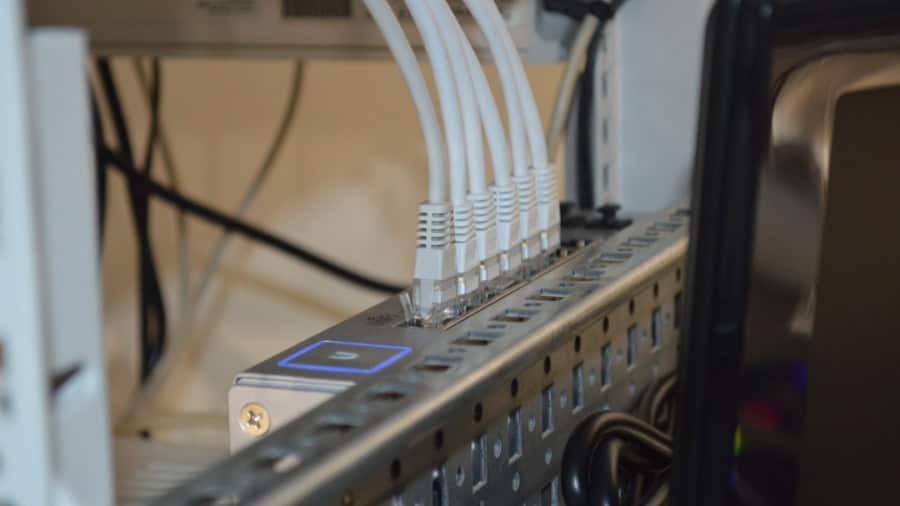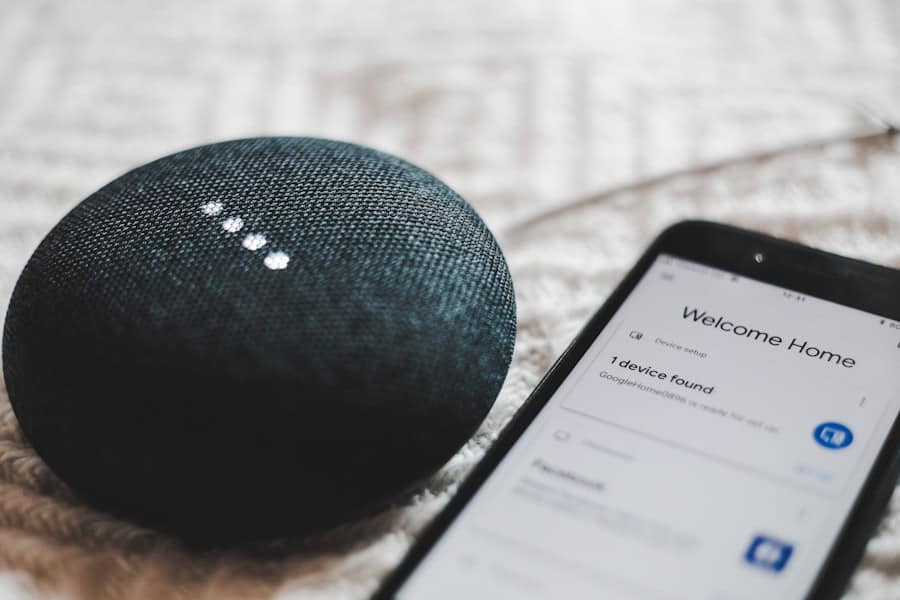In the rapidly evolving landscape of home automation, smart plugs have emerged as a pivotal component, transforming ordinary electrical outlets into intelligent, controllable devices. These compact gadgets allow users to manage their appliances remotely, providing a seamless integration of technology into daily life. With the proliferation of the Internet of Things (IoT), smart plugs serve as a gateway to a more connected home, enabling users to control their devices through smartphones, voice assistants, or automated schedules.
The convenience and flexibility offered by smart plugs have made them increasingly popular among tech-savvy consumers and those looking to enhance their home’s efficiency. The appeal of smart plugs lies not only in their functionality but also in their accessibility. They are relatively easy to install and can be used with a wide range of devices, from lamps and fans to coffee makers and heaters.
This versatility makes them an attractive option for anyone looking to dip their toes into the world of smart home technology without committing to a complete overhaul of their existing systems. As more people become aware of the benefits of smart plugs, they are likely to become a staple in modern households, paving the way for a more energy-efficient and convenient lifestyle.
Key Takeaways
- Smart plugs are devices that can be plugged into traditional electrical outlets to enable remote control and automation of connected devices.
- Smart plugs work by connecting to a Wi-Fi network and allowing users to control the power to connected devices through a smartphone app or voice commands.
- Using smart plugs can lead to benefits such as energy savings, improved convenience, and enhanced home security.
- Smart plugs can help optimize energy usage by scheduling power on and off times for connected devices, monitoring energy consumption, and integrating with smart home systems.
- Smart plugs are compatible with a wide range of connected devices, including lamps, appliances, and electronics, and offer features such as energy monitoring and voice control options.
How Smart Plugs Work
Remote Control and Voice Commands
At the core of smart plug technology is the ability to connect to a home Wi-Fi network, allowing users to control their devices from anywhere with an internet connection. When a device is plugged into a smart plug, it can be turned on or off remotely via a smartphone app or through voice commands using compatible virtual assistants like Amazon Alexa or Google Assistant.
Hardware and Software Components
Smart plugs typically utilize a combination of hardware and software components to function effectively. The hardware includes a microcontroller that processes commands and manages power flow, while the software consists of an application interface that allows users to interact with the plug.
Energy Monitoring and Insights
Many smart plugs also feature built-in energy monitoring capabilities, providing users with real-time data on energy consumption. This information can be invaluable for identifying energy-hungry devices and making informed decisions about usage patterns.
Benefits of Using Smart Plugs
The advantages of incorporating smart plugs into everyday life extend beyond mere convenience. One of the most significant benefits is the ability to automate routines, which can lead to increased efficiency and time savings. For instance, users can set schedules for their devices to turn on or off at specific times, ensuring that lights are only on when needed or that appliances are powered down during off-peak hours.
This level of automation not only simplifies daily tasks but also contributes to a more organized lifestyle. Moreover, smart plugs can enhance home security by allowing users to create the illusion of occupancy while they are away.
Additionally, many smart plugs offer features such as remote access and notifications, enabling users to monitor their devices in real-time and receive alerts if something goes awry. This added layer of security provides peace of mind for those who travel frequently or spend extended periods away from home.
Optimizing Energy Usage with Smart Plugs
One of the most compelling reasons to adopt smart plugs is their potential for optimizing energy usage. By providing insights into energy consumption patterns, these devices empower users to make informed decisions about their electricity usage. Many smart plugs come equipped with energy monitoring features that track how much power each connected device consumes over time.
This data can help identify energy hogs—devices that draw excessive power even when not in active use—allowing users to take corrective action. For example, a user might discover that their old refrigerator consumes significantly more energy than newer models. With this knowledge, they could consider upgrading to a more energy-efficient appliance or implementing stricter usage habits, such as unplugging devices when not in use.
Additionally, smart plugs can facilitate energy-saving practices by allowing users to set timers or schedules that align with off-peak energy rates, further reducing electricity costs. By leveraging these capabilities, households can contribute to broader sustainability efforts while also enjoying financial savings.
Compatibility with Connected Devices
The versatility of smart plugs is further enhanced by their compatibility with a wide array of connected devices. Most smart plugs are designed to work seamlessly with various appliances and electronics, making them suitable for diverse applications throughout the home. From simple lamps and fans to more complex devices like televisions and gaming consoles, smart plugs can accommodate nearly any device that operates via a standard electrical outlet.
Moreover, many smart plugs are compatible with popular smart home ecosystems, such as Amazon Alexa, Google Home, and Apple HomeKit. This compatibility allows users to integrate their smart plugs into existing setups effortlessly, enabling voice control and automation alongside other smart devices like thermostats, security cameras, and door locks. The ability to create interconnected systems enhances the overall user experience and fosters a cohesive smart home environment where devices work in harmony.
Smart Plug Features and Control Options
Remote Control and Accessibility
One of the most popular features of smart plugs is remote control via smartphone apps. This allows users to turn devices on or off from anywhere in the world, making it particularly useful for individuals who may forget to turn off appliances before leaving home or those who want to prepare their living spaces before arriving.
Scheduling and Automation
In addition to remote control, many smart plugs offer scheduling options that enable users to set specific times for devices to operate. For instance, users can program a coffee maker to start brewing at 7 AM each morning or set outdoor lights to turn on at sunset automatically. Some advanced models even include geofencing capabilities that trigger actions based on the user’s location—turning on lights when they arrive home or switching off devices when they leave.
Enhancing Convenience and Energy Efficiency
These features not only enhance convenience but also promote energy efficiency by ensuring devices are only active when needed. By automating devices and turning them off when not in use, users can reduce their energy consumption and lower their utility bills.
Considerations for Choosing Smart Plugs
When selecting smart plugs for home use, several factors should be taken into account to ensure compatibility and functionality meet individual needs. First and foremost is the plug’s compatibility with existing home networks and devices. Users should verify that the smart plug supports their Wi-Fi standards (typically 2.4 GHz) and is compatible with any voice assistants they may already use.
Another important consideration is the maximum load capacity of the smart plug. Different appliances draw varying amounts of power; therefore, it is crucial to choose a plug that can handle the wattage requirements of connected devices without risk of overheating or damage. Additionally, features such as energy monitoring capabilities, scheduling options, and app usability should be evaluated based on personal preferences and intended use cases.
By carefully considering these factors, consumers can select smart plugs that best suit their lifestyles and enhance their home automation experience.
Future Trends in Smart Plug Technology
As technology continues to advance at an unprecedented pace, the future of smart plug technology looks promising. One emerging trend is the integration of artificial intelligence (AI) into smart plugs, enabling them to learn user habits and optimize device usage accordingly. For instance, AI-powered smart plugs could analyze historical data on when devices are typically used and automatically adjust schedules for maximum efficiency without requiring user input.
Another trend is the development of more sophisticated energy management systems that leverage data from multiple smart plugs throughout a home. These systems could provide comprehensive insights into overall energy consumption patterns and suggest actionable steps for reducing waste. Furthermore, advancements in connectivity protocols may lead to improved interoperability between different brands and types of smart devices, creating a more cohesive ecosystem for users.
As sustainability becomes an increasingly pressing global concern, manufacturers are likely to focus on creating eco-friendly products that minimize environmental impact while maximizing efficiency.
Overall, the future of smart plug technology promises exciting developments that will further enhance convenience, efficiency, and sustainability in our homes.
If you are interested in optimizing energy usage in your connected devices, you may also want to check out this article on how to choose a smartphone for gaming. It provides valuable insights on selecting a device that not only meets your gaming needs but also helps you save energy. By making informed choices about your electronics, you can ensure that you are maximizing efficiency and minimizing waste.
FAQs
What is a smart plug?
A smart plug is a device that can be plugged into an electrical outlet and allows users to control the power to the connected devices remotely using a smartphone app or voice commands.
How do smart plugs optimize energy usage in connected devices?
Smart plugs can optimize energy usage in connected devices by allowing users to schedule when devices turn on and off, monitor energy usage, and set up automation rules to turn off devices when not in use.
What are the benefits of using smart plugs for energy optimization?
Using smart plugs for energy optimization can help reduce energy waste, lower electricity bills, and contribute to a more sustainable and eco-friendly lifestyle.
Can smart plugs work with any type of device?
Smart plugs can work with most electrical devices that plug into a standard outlet, including lamps, fans, coffee makers, and more. However, they may not be suitable for high-powered appliances such as refrigerators or air conditioners.
Are smart plugs easy to install and use?
Smart plugs are generally easy to install and use, as they typically require no special wiring or technical expertise. Users simply need to plug the smart plug into an outlet, connect their device, and set up the accompanying app for control.



